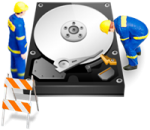
How to Recover Deleted Tesla Dashcam Footage
The article discusses the possibility of recovering deleted Tesla dashcam footage, emphasizing that success depends on factors such as the age of the footage, the recording mode used, and the condition of the USB drive storing the videos. Tesla dashcams typically record one-minute clips for up to an hour before overwriting the oldest footage, which complicates recovery efforts. The article aims to guide readers through the considerations and steps necessary to potentially retrieve lost dashcam videos.
GoPro SD Card Errors: How to Fix Them
GoPro cameras are popular for capturing high-quality videos and photos, but users frequently encounter SD card errors that can be disruptive. These errors may arise from a corrupted memory card file system, physical damage, using the same SD card on multiple devices, improper ejection, removing the SD card during data transfer, or virus infections. The article offers various methods to resolve these issues, ensuring the GoPro continues to function effectively.
How to Restore a Missing D: Local Disk Drive on Your Computer
The article discusses how to restore a missing D: disk drive on a computer by first determining whether the issue is hardware or software-related. It highlights the importance of identifying the cause, such as recent installations or updates, to avoid unnecessary troubleshooting steps. The article also mentions common reasons for the disappearance, including physical damage to connectors or drives, and provides a data recovery guide for retrieving lost files if standard fixes do not work.
Recovering Data from Kingston Memory Cards: A Comprehensive Guide
The article provides a comprehensive guide on recovering data from Kingston memory cards, which are known for their high quality but still susceptible to data loss. It addresses various scenarios of data loss, including unreadable cards, accidental deletions, and formatting issues. The guide aims to help users retrieve their lost data by offering solutions for both logical errors and physical damage. It also advises on how to choose the best recovery tool and troubleshoot common issues related to Kingston Memory Cards.
Quick Format vs Full Format: Which is Better for Your Needs?
A quick format is a fast procedure that removes the file allocation table, making the drive appear empty while the actual data remains on the disk until it is overwritten. This method is time-efficient and convenient for reusable drives but poses a risk as data recovery is possible.In contrast, a full format involves a more thorough process that checks the entire disk for bad sectors and overwrites all data, making it more secure but time-consuming. This method is ideal for securely erasing data or preparing a drive for new use, ensuring that old data cannot be recovered.
Recovering a Formatted Partition: A Comprehensive Guide
The article discusses the possibility of recovering data from a formatted partition, particularly focusing on the differences between a quick format and a full format. It explains that a quick format, which is the default option, does not completely erase data but instead marks the drive as empty, allowing new data to overwrite the existing files. The article emphasizes that data recovery is possible after a quick format as long as new data has not overwritten the old files.
How to Fix “Windows Has Detected File System Corruption on Local Disk C” Error
The article addresses the “Windows has detected file system corruption on local disk C” error, which usually occurs due to a damaged file system or corrupted Windows system files. This error prevents users from performing a system restore until the issue is resolved. The article provides an overview of the error, including common error messages, and offers several methods to fix the problem and restore system functionality.
Comprehensive Guide to SATA Hard Drive Data Recovery
The article provides a detailed guide on recovering data from SATA hard drives, emphasizing the importance of careful handling due to their intricate mechanical and electrical components. It highlights various causes of data loss, such as mechanical failures, electrical issues, and file corruption or deletion. Understanding these common failure types is crucial for selecting the appropriate data recovery method.
Overview of a Data Recovery CleanRoom
Overview of a $2 million ISO 5 data recovery cleanroom.
Understanding Data Loss: Physical vs. Logical Damage
The article discusses the importance of understanding the causes of data loss in order to address it effectively. It differentiates between physical and logical damage to data storage devices such as hard drives, RAIDs, flash drives, and servers. Physical data loss is often easier to identify and can result from incidents like fire, water damage, dropping, power failures, or natural disasters. Recognizing the type of damage is crucial for determining the appropriate recovery approach.




